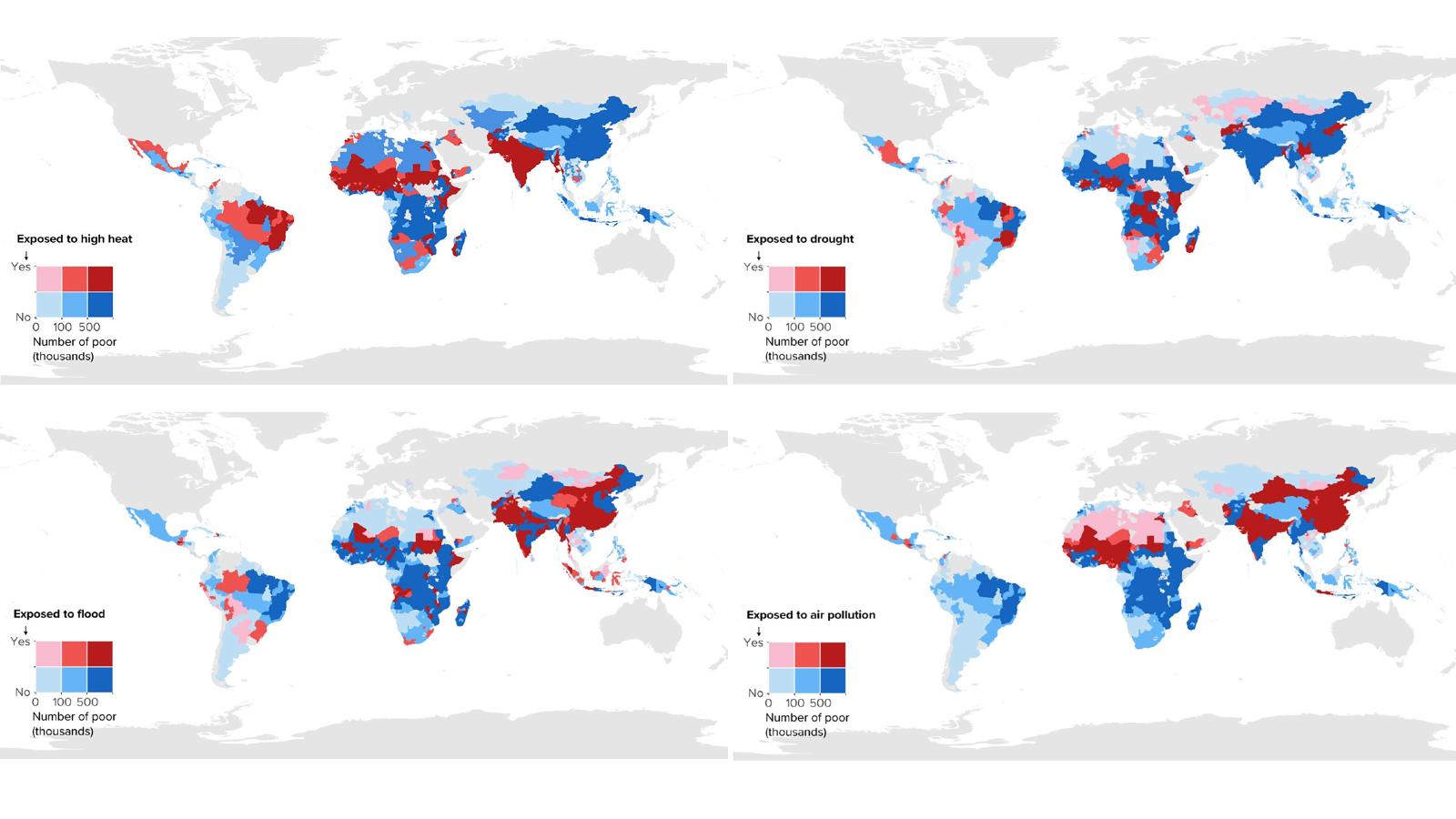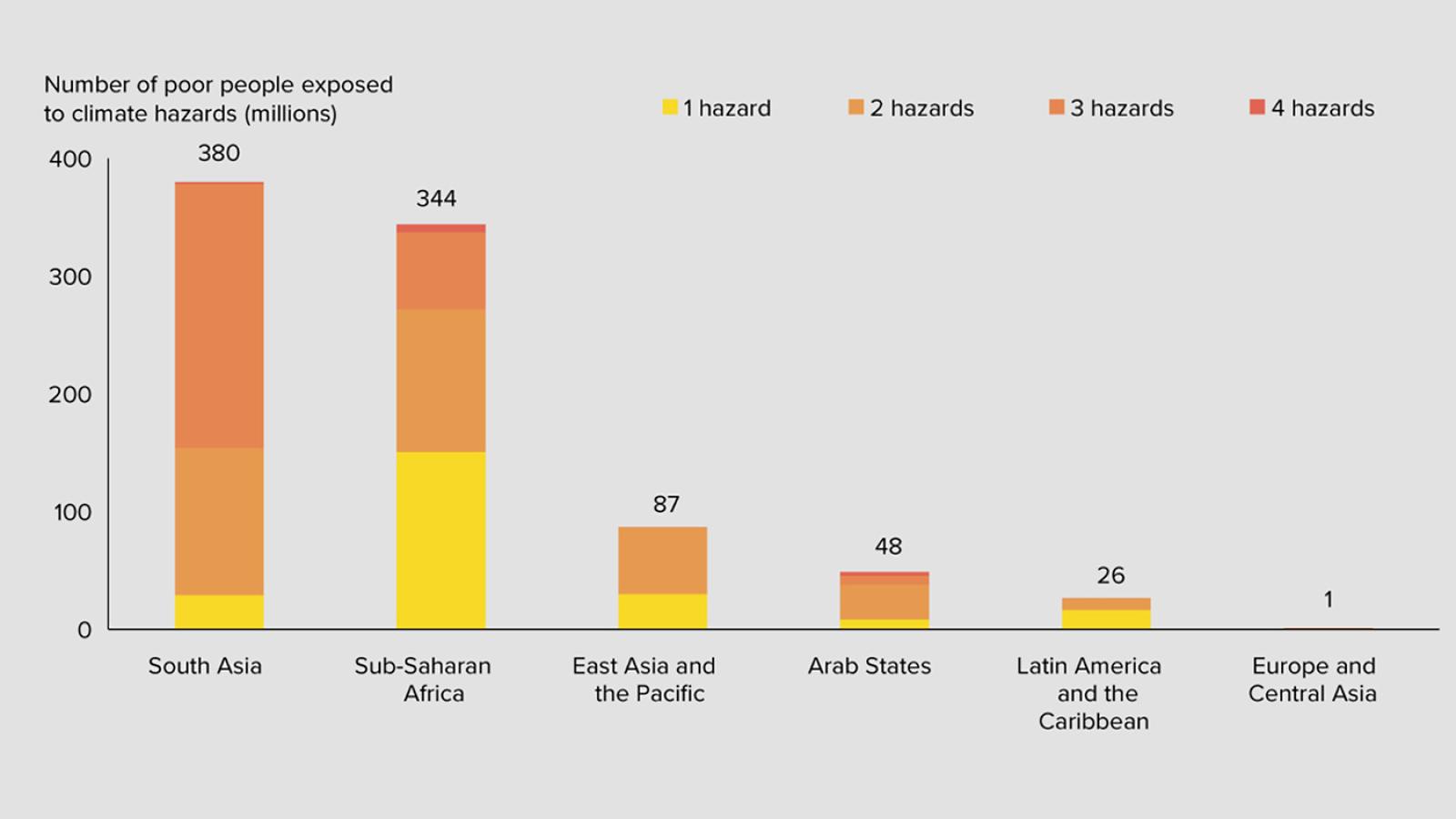Climate action must leave no one behind
The latest global MPI report presents important new evidence on the experiences of multidimensionally poor people in relation to the climate crisis.

Across the world, 1.1 billion people live in multidimensional poverty. They experience overlapping deprivations in health, living standards, and education. Yet for many of them, their experience of poverty is compounded by another challenge: climate hazards.
Each year, the Oxford Poverty and Human Development Initiative (OPHI) and the United Nations Development Programme (UNDP) publish the global Multidimensional Poverty Index (global MPI), which this year assesses multidimensional poverty levels across 109 countries covering 6.3 billion people. The 2025 global MPI report also takes a closer look at the overlapping hardships of poverty and climate hazards, a double burden faced by many around the world.
This report is the first time that data on climate hazards and multidimensional poverty have been overlaid with each other. The findings are clear – poverty isn’t a standalone socio-economic issue, but one which is deeply interlinked with negative climate conditions. Nearly 80% of the world’s multidimensionally poor people (887 million) live in regions which are exposed to one of four climate hazards: high heat, drought, floods, and air pollution.
These four hazards are major drivers of human hardships and daily challenges, influencing health, livelihoods, and long-term development outcomes. Using subnational data where possible, the global MPI 2025 report overlays data on these climate hazards with multidimensional poverty data, matching the year of the MPI survey for each country. The results track how climate hazards simultaneously struck the regions where multidimensionally poor people live.

Source: OPHI and UNDP (2025). Global Multidimensional Poverty Index 2025, Overlapping Hardships: Poverty and Climate Hazards.
The compounding hardships of climate hazards and multidimensional poverty
The report explores the ways climate hazards compound the burdens experienced by multidimensionally poor people. The two most widespread hazards that multidimensionally poor people are exposed to globally are high heat (608 million) and air pollution (577 million). High heat can worsen living conditions, especially for poor households without access to cooling systems, while air pollution has been linked to serious health risks and early death.
For a significant proportion of multidimensionally poor people, climate hazards overlap. There are 651 million multidimensionally poor people who live in regions exposed to two or more climate hazards and 309 million to three or all four. Those facing this ‘triple or quadruple burden’ often possess limited assets and minimal access to social protection systems, amplifying the negative effects of the shocks and highlighting the importance of investing in programmes that build resilience.

Source: OPHI and UNDP (2025). Global Multidimensional Poverty Index 2025, Overlapping Hardships: Poverty and Climate Hazards.
The uneven burden of exposure
Middle-income countries emerge in the global MPI 2025 as the hidden epicentre of poverty, home to nearly two-thirds of multidimensionally poor people. In these countries, characterised by rapid industrialisation and development, poverty is still a lived reality for many. This is particularly true of lower-middle-income countries, which are home to nearly half of the world’s multidimensionally poor people.
Multidimensionally poor people in lower-middle-income countries also bear the heaviest burden of exposure to climate hazards. Fully 88% of them live in regions exposed to climate hazards, often simultaneously – 75.6% of them face two or more hazards, and 44.4% face three or four. Extensive air pollution is a key component of this burden, potentially reflecting the impacts of processes such as industrial activity, urbanisation, and increased transport emissions as lower-middle-income countries develop. Indeed, 70.9% of multidimensionally poor people in lower-middle-income countries live in areas with high levels of air pollution. High heat is another challenge, with 71.7% of multidimensionally poor people living in regions which saw 30 or more days per year where the daily maximum temperature was 35°C or above.
Poverty reduction is possible, but challenges remain
In South Asia, many countries have seen a rapid acceleration of multidimensional poverty reduction. Between 2005/6 and 2019/21, roughly 414 million people were lifted out of multidimensional poverty in India. These reductions have also been identified in Bangladesh and Nepal, giving hope to many other countries that fast poverty reduction is possible.
However, for those still living in multidimensional poverty in the region, climate hazards pose a real risk. A staggering 99.1% of multidimensionally poor people in South Asia are exposed to at least one climate hazard – more than any other world region. These hazards often overlap, with 91.6% living in areas exposed to two or more climate hazards, and 59% to three or four. There is an opportunity here: South Asia can chart a new path forward, balancing determined poverty reduction with innovative climate action.
Bringing poverty reduction and climate action goals together
For people living in multidimensional poverty, already facing overlapping deprivations, climate hazards are a stark reality. The findings of the global MPI 2025 clearly show how these two issues overlap. As the COP30 climate summit approaches, we must work towards human-centred climate action, aligned with poverty eradication efforts.
Targeted action should focus on areas where poverty and climate hazards overlap most sharply. Building resilience is an urgent priority, strengthening local capacities to face climate hazards. As we work towards poverty eradication in the face of the climate crisis, our commitment is clear: no one must be left behind.
- Download OPHI and UNDP (2025) Global Multidimensional Poverty Index 2025, Overlapping Hardships: Poverty and Climate Hazards.
- Download the background technical paper: Alkire, S., Dehingia, N., Jambrina-Canseco, B., Maher, N. and Nogales, R. (2025) ‘Measuring the overlap between climate hazards and multidimensional poverty: A global sub-national assessment’, OPHI Research in Progress 70a, Oxford Poverty and Human Development Initiative (OPHI), University of Oxford.
With thanks to report authors: Niall Maher, Ricardo Nogales, Beatriz Jambrina-Canseco, and Sabina Alkire at the Oxford Poverty and Human Development Initiative at the University of Oxford, and Nabamallika Dehingia at the United Nations Development Programme’s Human Development Report Office.

